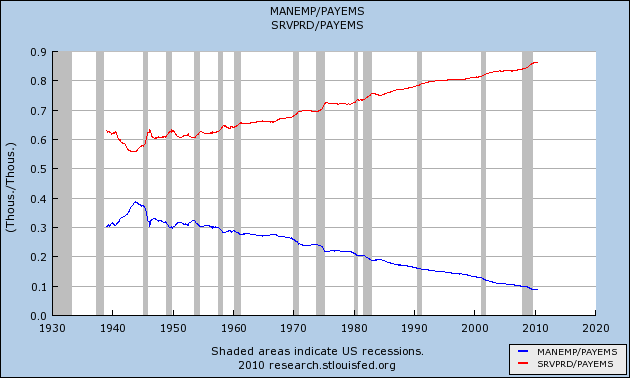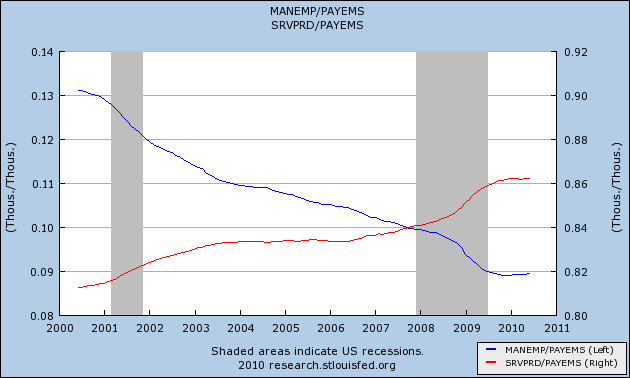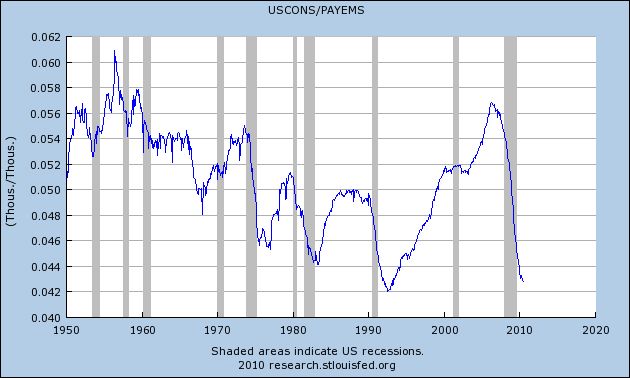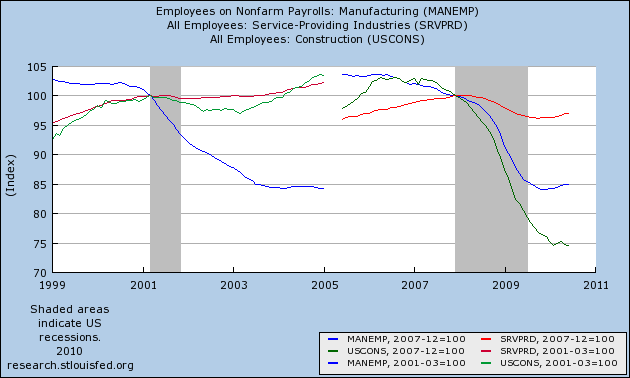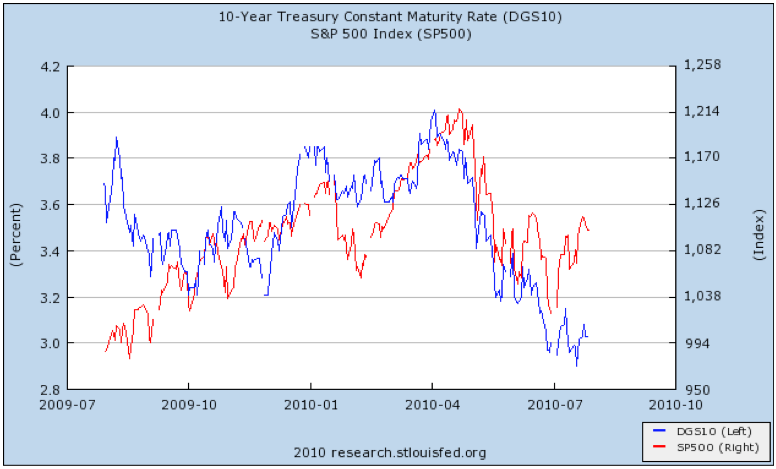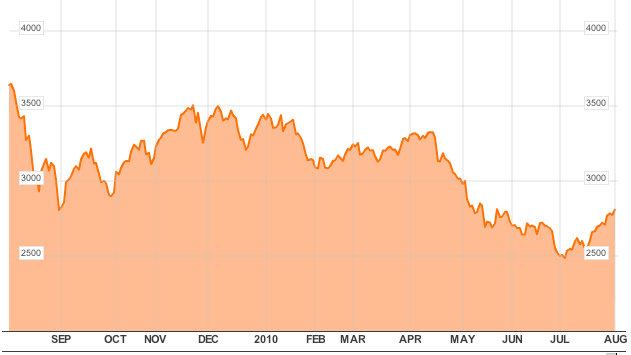On July 7, with the DJIA at 9600, in Market Sentiment: a Big, Fat, Hanging Fastball I noted that investor and pundit sentiment was terribly bearish, but that insiders were buying at a ratio similar to the bottoms in 2008 and 2009, and said "the icing on the cake" was that :
I read about the CNBC prediction of a Great Depression like head and shoulders formation [a]t Digby's Hullabaloo, an exclusively political left-wing blog.... If bearishness is so pervasive, and expectations of a market move based on a technical indicator so universally known, that investment novices who are political writers warn you about what to expect in the market ....In the past, indicators like this have been good for at least 30 days. Well, 30 days expires over the weekend, so unless we crash today, the 'Digby put' has paid off a handsome 10%, accurately forecasting the strongest rally all year. In other words, you're reading the right blog.
In addition to the monthly jobs report, (which to me highlighted the absolute idiocy of not helping out the states and local governments, where the lion's share of losses have been in the last couple of months), we learned that manufacturing and services were expanding, but manufacturing was doing so at a slightly slower (but still good) rate. Income and spending stalled in June, and more importantly, households ramped up their savings again in May and June to over 6%. Short term this hurts the recovery, but long term it is necessary.
Turning to our weekly numbers, the Mortgage Bankers' purchase mortgage index rose for the third week in a row, now three steps up out of the sub-sub-basement. It definitely looks like we've hit the post $8000 credit termination bottom. Now we need to see if we get a significant bounce (good) or not (bad).
The ICSC reported same store sales for the week ending July 30 rose 3.9% vs. a year earlier, and declined a slight 0.1% from the prior week. Shoppertrak reported the opposite, that sales fell 0.6% for the week ending July 31 YoY. A very mixed result!
Gas prices reamined steady at $2.74 a gallon. At a rate of 9.477 million barrels a day, last week was again one of the highest usages in the last 3 years, a good sign (except for conservation and energy independence).
The BLS reported 479,000 new jobless claims, the highest since April. While auto worker anomalies have ended, I continue to regard this data series as distorted due to filings by laid off census workers, which will probably continue through September. It is possible that almost the entire "stagnation" in this index since the beginning of June has been due to filings by up 25,000 or more census workers in some weeks.
Railfax continues to signal decline. Cyclical traffic is still slightly declining towards last year's level, and baseline traffic is already there. Only intermodal traffic, signalling imports and exports, is showing a very slight improvement. Waste and scrap materials aren't just declining, they are worse than a year ago. Rail traffic continues to argue that the slowdown or double-dip isn't in the future, it is occurring right now.
The American Staffing Association reported that for the week ending 25, "temporary and contract employment grew by 1.51%, pushing the index up one point to a value of 92." This index has grown almost every week this year, and temporary/contract jobs are responsible for almost 1/3 of all non-census job growth since the bottom at the end of last year. I suspect that we will have to wait for the temp workforce to be back to pre-recession levels before we see large numbers of permanent hiring to take place. At present rates, that is still 3-6 months away.
M1 was up 1.2% this week, so is up 4% on a YoY basis. For the month of July, “real M1” is up about 4% YoY). M2 held even this week, or about 2% YoY for July so far (meaning “real M2” is up about 0.9%). A reminder that to be "out of the woods" in terms of a double dip I would want to see continued positive real M1 and real M2 up more than 2.5%.
Last week I started to track weekly BAA commercial bonds. I selected this series because in deflation these spreads may be better indicators (albeit more coincident than leading) than the yield curve, and because this series has been reported since the 1920s. If anyone knows of a free source of short term commercial paper rates going back that far, please leave it in the comments. Weekly BAA commercial bond rates dropped slightly again last week to 5.94%, showing no sign of distress as might be found if another deflationary bust had started.
As usual, there continues to be good news in the Daily Treasury Statement. August has started out at $31.8 B vs. $29.7 B a year ago. More importantly, for the last 20 reporting days, we are also up over 9%, $130.1 B vs. $119.1 B. I'm sure some site somewhere will report the shocking news that July 2010 withholding ended slightly below July 2009, $131.2 B vs. $131.4 B (the last week of July 2010 was dead). As i noted last week, however, there was one more reporting day last year -- which is exactly why I use the 20 day period. This series continues to show a lot of strength for over two months now, even with about 400,000 census layoffs having taken place during that time.
In the real world, most of the reasons for the April-June slowdown have ended. The price of Oil, wage stagnation, and the insanity of Herbert Hoover-ism in Washington continue to be major causes for concern going forward. In the meantime, enjoy the weekend!
























